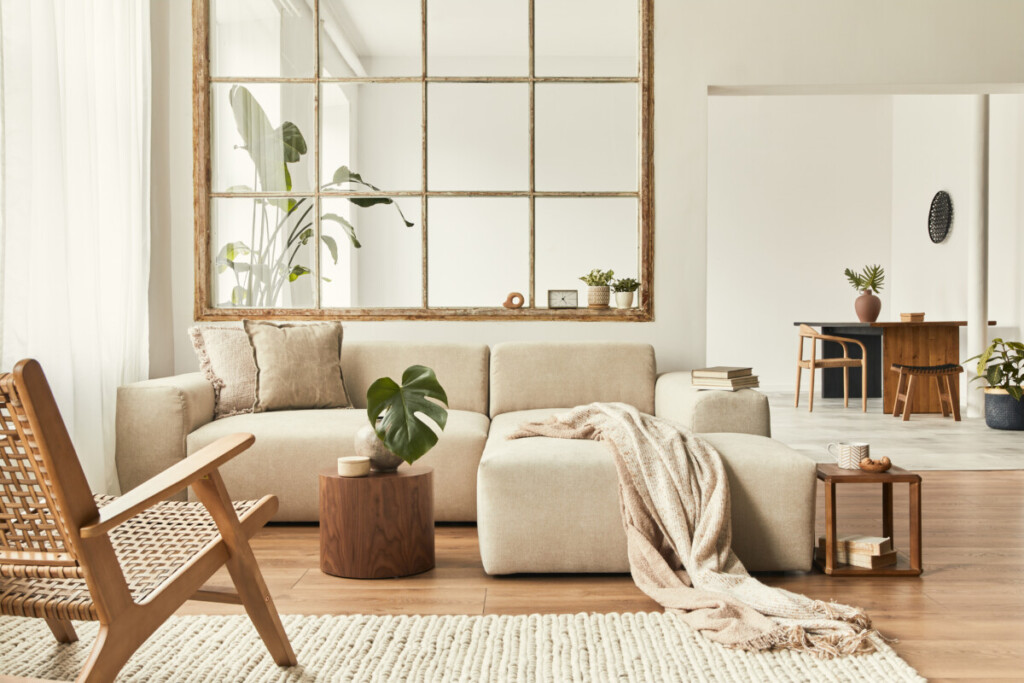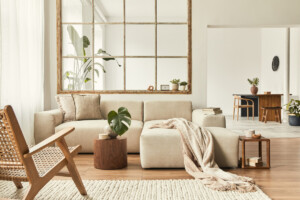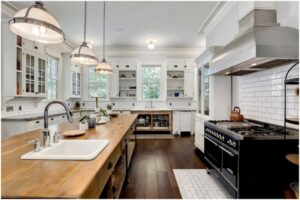Design Through the Decades: The Top Interior Trends from the 2010s Onward


Design experts share how today’s best homes mix vintage character, modern tech, and timeless design choices that last.
The 2010s to today have been defined by a mix of old and new—spaces that embrace both modern convenience and classic character. Think reclaimed wood, exposed ceiling beams, and vintage furniture mixed seamlessly with clean lines and smart home features. It’s a decade (and counting) where sustainability, comfort, and personality all coexist.
Whether you’re updating a historic apartment in Boston or designing a new house in Austin with a timeless twist, today’s homes are all about balance. We asked design experts to share how they’re incorporating vintage-inspired touches, sustainable materials, and subtle tech upgrades into modern homes—creating interiors that feel both fresh and enduring.

1. Pair classic details with a modern twist
“I love how 2010s–present design fearlessly blends old and new—there’s something timeless about pairing classic crown molding or vintage light fixtures with clean, modern furniture and smart tech,” shares Alex Taylor from CrownTV. “One of my favorite twists is using reclaimed wood in unexpected places, like a ceiling beam in a sleek kitchen or a floating vanity in a minimalist bathroom. I’m still obsessed with matte black hardware—it anchors any space with elegance and edge. These contemporary styles don’t fight tradition; they elevate it, creating homes that feel both lived-in and forward-looking.”
2. Blend smart home innovation with timeless charm
“One of my favorite things about 2010s–present-day design is how seamlessly it blends modern innovation with timeless character.” Rebecca from Rebecca Lauren Interiors recommends, “I love mixing smart home tech with classic touches like reclaimed wood beams or vintage-inspired lighting—it’s where old soul meets new world. A unique twist I often use is pairing sleek, minimalist furniture with traditional paneling or detailed millwork to strike that perfect balance. These contemporary elements don’t overpower traditional interiors—they enhance them, creating spaces that feel both grounded and forward-thinking.”
3. Design around connection, comfort, and personal style
“What I love most about home design from the 2010s to today is how our spaces have evolved to focus on people—gathering together, sharing meals, and spending time with the ones we enjoy most,” mentions Meredith Myers at Jack and Mo. “Kitchens and family rooms are built for connection, while outdoor living areas bring comfort outside with fire features and cozy seating. Entryways now say “welcome” with built-ins, bold wallpaper, and smart storage.
Our homes have also become more multi-functional—dining rooms double as record lounges or game night hubs, and guest rooms serve as home offices or craft spaces. We’re designing smarter, not bigger, shifting away from the need for oversized homes. More than ever, personal taste drives design decisions—whether blending heirloom furniture with modern pieces, or leaning into Japandi or California Modern style.Homes now reflect who we are, not just what’s trending. Finishes like natural stone, sleek woods, and custom touches meet clean lines and airy layouts, creating that just-right balance of old and new.”

4. Embrace personality with bolder transitional design
“What I love about the evolution of design from the 2010s until now is the marriage of modern and traditional into what we often call the “transitional” style,” says Farrah Brittany, Founder/Agent at The Agency. “While I don’t love that term—it feels a bit generic and overused—it’s common to classify a property as something like Modern Spanish or Contemporary Traditional (as ironic as that sounds).”
Farrah continues, “I’m especially drawn to the use of organic stones that were once considered purely contemporary—like unfilled travertine—paired with traditional brass fixtures that have naturally patinated over time. But what I’m really excited about right now is the movement back toward moodier, warmer elements: think bold paint colors and darker wood tones in flooring and cabinetry. It’s a refreshing shift from the all-beige plaster walls and oatmeal-colored white oak floors we’ve gotten so used to seeing in our feeds. I love that design is becoming more personality-driven again.”
5. Combine classic details with modern innovation
Margaret DeFazio from the The DeFazio Flanagan Team suggests, “One aspect I particularly love is the fusion of vintage and modern elements, which not only celebrates our architectural heritage but also embraces contemporary innovation. For instance, integrating reclaimed wood beams within minimalist spaces adds warmth and character, while smart home technology offers both convenience and a sleek aesthetic.
My favorite element from this era has to be the smart integration of classic design details—like coffered ceilings or herringbone floors—that when paired with modern materials, create a timeless yet current look. These contemporary styles, when blended with traditional interiors, offer a layered richness that speaks to both past and present, creating spaces that are not only functional but also deeply personal and inviting.”
6. Keep open layouts and white walls relevant with thoughtful details
“Open concept living, which took off in the 2010s, celebrates flexibility and flow—allowing one space to serve many functions through thoughtful design elements like rugs, lighting, and furniture placement,” mentions Angele from Ikorodu Interiors. “It also invites more natural light and a stronger connection to the outdoors. Pair that with bright white interiors, which offer a calm, versatile backdrop, and you have a timeless combo. White walls create space for textures, colors, and personal touches to shine—while remaining neutral enough to adapt as your style evolves.”
The post Design Through the Decades: The Top Interior Trends from the 2010s Onward appeared first on Redfin | Real Estate Tips for Home Buying, Selling & More.




